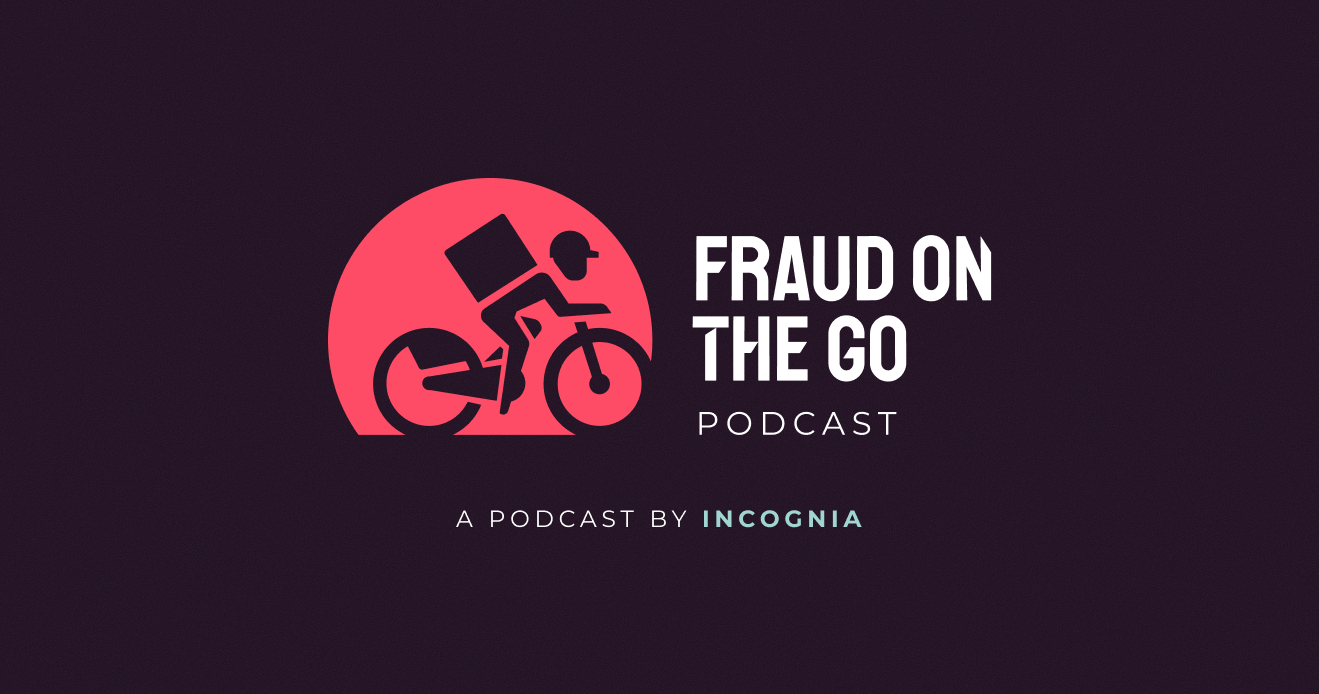- Blog
- How to Make the Case for Fraud Prevention With Different Departments
How to Make the Case for Fraud Prevention With Different Departments
Not every team in your organization is home to fraud fighting experts. That's why it's important to think about the best ways to frame your work and your suggestions.
Subscribe to Incognia’s content
For those who prefer listening over reading, we've provided an audio transcription player below, allowing you to enjoy this post through your speakers or headphones.
Fraud prevention is a cross-functional effort. Fraud fighting teams are at their strongest when they’re in communication with multiple departments and stakeholders—from C-suite to operations to marketing and so on.
Ultimately, everyone in your organization has the same goal: the well-being and growth of your platform. But different teams have different ways of meeting that goal, and that’s where conflicting priorities can arise.
Preventing fraud is a team effort—not just within your own team, but within the whole company. If you’re looking to make more in-roads with your colleagues, this post will go over some advice for reaching out to and communicating with different teams.
Key TakeAways
- Approaching conversations about the benefits of fraud prevention from the perspective of return on investment and customer lifetime value can help more effectively communicate fraud prevention's value
- Fraud prevention teams can also have an impact on the company culture when it comes to things like institutional skepticism of abnormal users
C-suite
One of the most important things to remember when talking to other teams is that they’re not fraud prevention experts. After all, that’s why they hired you. That doesn’t mean you can’t talk about your projects and proposals, but it does mean that you have to lay off the fraud prevention jargon and speak with your C-suite’s language.
What language is that? It’s the language of return-on-investment.
Take this example Incognia’s CEO and co-founder Andre Ferraz gave in a Marketplace Risk webinar earlier this year:
“If you just come to your CEO and you say, ‘Hey, there were 2 million fake accounts last year,’ that sounds big, but what does it mean? If you're able to say, ‘These fake accounts, all of them, they used a $10 coupon.’ That means you just gave $10 to a bunch of fraudsters, right?
So if you're able to do that math, you should always do it, because if you come to your CEO and you say, ‘Hey, we burned $20 million of coupons.’ That's a different story.
Exactly the same scenario, but you just brought this up in a much better way, so people can understand the real impact, right?”
Your executives’ days are busy. They’re most likely taking multiple meetings a day, so the more digestible and to-the-point you can make your presentations, the better. Don’t just describe the problem; describe the impact (and how fixing it can benefit the company).
Marketing
We’ve talked at length on this blog about how and why fraud prevention and marketing should collaborate more, especially in marketplace and gig economy organizations. That’s because the marketing promotions common in these industries are especially vulnerable to fraud and abuse.
Using promo abuse as an example, a lot of the solutions fraud prevention suggests to curtail promo abuse—limiting the discount amount, denying promos to certain users, leaning more on loyalty programs than new user incentives, increasing onboarding friction, etc.—sound like growth killers to a marketing team.
Marketing’s objective is growth, so many fraud prevention measures sound contrary to their goal. But that’s not the case.
In an Incognia webinar titled Multi-Accounting: The Hidden Gateway to Marketplace Fraud, Glovo’s Head of Operations Faisal Ahmad Jafri explained his strategy for making a stronger fraud prevention case to marketing teams:
“I'll give you a practical example. I have always worked with a growth team very closely and how I have tackled this problem is by showing them the life cycle or the lifetime value of a customer. If you are in a customer growth spree, but there are specific cohorts of new customers that have a very poor customer lifetime value, I think that is the way you can convince the growth team that this is a cohort of customers that is not adding any value to the business, but rather they are draining your P& L.”
Brian Hiebert, Senior Fraud Operations Manager at Just Eat Takeaway, agreed, emphasizing that marketing and fraud prevention ultimately want the same things:
“You know, the last thing that your marketing team wants to see is that you're throwing this money at new customers and promotions are being utilized, but then none of those customers come back, which indicates that it's just a fake account created just to utilize the new customer voucher.”
When you collaborate with marketing about the best ways to design and monitor their promotional campaigns, you help them make the most of their budget to ensure that real, converting customers join your platform. Emphasizing how your measures will help in the long run can do a lot to reassure marketing stakeholders that fraud prevention isn’t a growth killer.
Customer service
Like the marketing team is often the team closest to promo abuse challenges, the customer service team is usually the closest to refund abuse. Using food delivery as an example, if someone is trying to get their meal for free by requesting a fraudulent refund, customer support is who they’ll be talking to.
With that in mind, it’s valuable for fraud prevention to understand how the customer service team thinks about refund policies and the requests they have to deny.
As Faisal says in the webinar,
“As risk professionals, we are just trying to classify who is eligible for a refund and who is not eligible for a refund. But the customer service reps would start to think that, ‘Okay, this person is a fraudster and this person is a genuine or an original customer.’
So I really had to work with the customer support reps to make them understand that you are not supposed to say, let's say, ‘Faisal is fraud,’ or ‘Brian is fraud.’ You will only say that this person is not eligible for a refund and this person is eligible for a refund. Fraud in the customer base, let's say there would be about 5 percent of the customer base, maybe 10 percent of the customer base, but your business is really growing because of genuine customers.
And if you start to look at every customer with the lens of fraud, then your business can't grow. Then you won't think for the betterment of the customers.”
Having an open line to customer service is also important so that they feel comfortable contacting fraud prevention about anything new or strange they’re seeing on their side. Like Andre said in the “Cost Center or Profit Center?” webinar, customer service can be an excellent source of intelligence on new fraudster tactics:
“It's important to maintain a line of communication with the customer support teams so that you can understand if anything is changing in terms of people calling your contact center and complaining about X, Y, and Z, right?
You should have a relationship with that team because usually that's where you start understanding what could be changing… Once you have a few anecdotal examples, then try to engage the data science team, for example, and do a deep dive to try to understand how big a problem is.”
When we break down communication barriers between different teams, we get closer in alignment on the best way to prevent fraud and promote growth at the same time.
De-siloed fraud prevention is a powerful force against fraudsters
If there’s one thing we know about fraudsters, it’s that they communicate. They share intel, they share tools, and they share methods. If we don’t communicate within our own organizations, that’s an advantage we’re giving away.
While different teams have different ways of looking at things and different short-term goals, everyone shares the same long-term objective: the growth and betterment of the platform.
Learning how to best frame your argument for certain fraud prevention measures or strategies helps position your team as a contributor, not a necessary detractor, to that growth.




